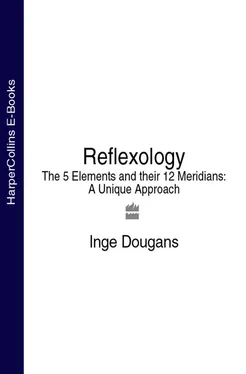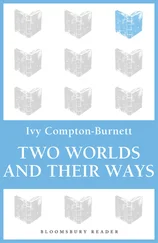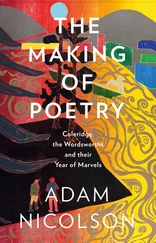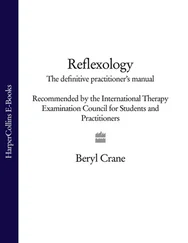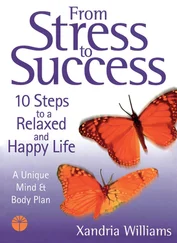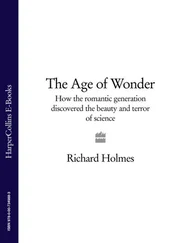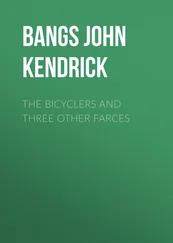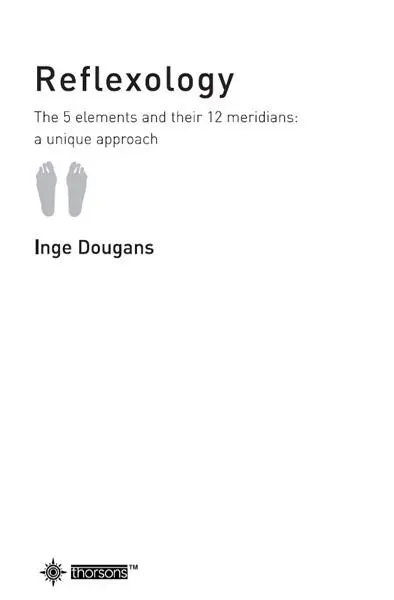
dedication Dedication Introduction 1 The Foundation of Modern Reflexology 2 The Principles of Chinese Medicine 3 Applying a Knowledge of the Meridians in Reflexology 4 The 5 Elements and their 12 Meridians 5 Mapping the Feet 6 Anatomy, Structure and Conditions of the Feet 7 The Treatment Sequence Appendix: The Vacuflex System References Bibliography Acknowledgements Copyright About the Publisher
This book is dedicated to my two sons, Daniel and Thomas, who wholeheartedly believe and support me – you are my yin/yang balance in my life; and also to Wolf-Rudiger, who for years has been the ‘spark’ that keeps my fire element strong.
Cover
Title here
Dedication dedication Dedication Introduction 1 The Foundation of Modern Reflexology 2 The Principles of Chinese Medicine 3 Applying a Knowledge of the Meridians in Reflexology 4 The 5 Elements and their 12 Meridians 5 Mapping the Feet 6 Anatomy, Structure and Conditions of the Feet 7 The Treatment Sequence Appendix: The Vacuflex System References Bibliography Acknowledgements Copyright About the Publisher This book is dedicated to my two sons, Daniel and Thomas, who wholeheartedly believe and support me – you are my yin/yang balance in my life; and also to Wolf-Rudiger, who for years has been the ‘spark’ that keeps my fire element strong.
Introduction
1 The Foundation of Modern Reflexology
2 The Principles of Chinese Medicine
3 Applying a Knowledge of the Meridians in Reflexology
4 The 5 Elements and their 12 Meridians
5 Mapping the Feet
6 Anatomy, Structure and Conditions of the Feet
7 The Treatment Sequence
Appendix: The Vacuflex System
References
Bibliography
Acknowledgements
Copyright
About the Publisher
Over the last two decades, reflexology has become an established form of natural healing that is now gaining wide acceptance in the Western world. Yet reflexology has grown out of a much older system: traditional Chinese Medicine (TCM).
The practice of TCM, including acupuncture, goes back several thousand years. Since that time it has been well preserved and continuously developed. TCM is characterized by its specific diagnostic techniques and therapeutic principles based on a practitioner’s interpretation of the physiological functions and pathological changes in the human body.
Reflexology also works on pressure points to stimulate the body’s own healing potential, but mainly in the feet and with specific massage techniques. Even though reflexology has its roots in ancient Eastern forms of healing, the development of modern reflexology has happened primarily in the West. When reflexology first emerged in the West, the traditional Chinese energy pathways, or meridians, and the associated pressure points in the body were not common knowledge. As a result, reflexologists independently developed their interpretations of energy zones in the body and corresponding pressure points. The ten reflexology zones are helpful, but we can gain a greater understanding of the energy pathways in the body if we look to TCM.
I have been practising and teaching reflexology for over 25 years. These years of experience have made it clear to me that elements of traditional Chinese Medicine can – and indeed should – play a vital role in the effective practice of reflexology. For example, when you work with a patient to assess the root cause of an ailment or condition, the Chinese meridian system is more accurate than the ten reflexology zones. It is time for reflexology to revisit its Eastern roots and draw vital lessons from its ancient heritage to enhance its practice.
There is another essential part of reflexology training I advocate that is not a part of traditional reflexology training: diet. Reflexology, like many of the natural healing therapies available today, cannot be successfully applied without also considering how the body is nourished. What we eat has a profound impact on the general environment of the body and also affects how well it can respond to healing treatments. If a person has poor eating habits it will make congestions and diseases denser and more difficult for the body to eliminate. This is why you must also look at a person’s diet as part of their overall treatment, in particular their blood sugar and acid-alkaline balance, since a body that is too acid is more vulnerable to disease and injury. If you take steps to establish a healthy environment in the body it is much easier to reverse and prevent illness.
I have been teaching and practising this new integrated approach to reflexology, combining TCM and diet, for many years. Indeed, my school of reflexology, The International School of Reflexology, has campuses around the world and this approach is taught at every one and with great success. Time and time again, people tell me how an understanding of TCM and diet has made them more effective reflexologists.
It is now time to make this knowledge and understanding more widely available and this is what I have set out to achieve with this book: Chapter 1 takes a look at the history of reflexology and how it developed into what we know today; Chapters 2 and 3 introduce the principles of Chinese Medicine and show how they can be applied to reflexology to facilitate more effective healing; Chapter 4 takes a close look at the traditional Chinese systems of the 5 Elements and their 12 meridians from a Western perspective and interprets the traditional characteristics of fire, earth, metal, water and wood for the modern world; Chapter 5 maps the reflexes on the feet; Chapter 6 studies the anatomy, structure and various conditions of the feet; and Chapter 7 shows how to put it all together and give a full reflexology treatment.
It is my hope that this book will make a strong contribution to the understanding of reflexology and that this integrated approach will bring enormous benefits, in terms of health and healing, to practitioners and patients throughout the world.
I wish you good health and the joy of always feeling fit and full of energy.
Inge Dougans
chapter 1
the foundation of modern reflexology
The European Influence
In Europe, a form of reflexology was known and practised as far back as the 14th century. According to Harry Bond Bressler in his book Zone Therapy, pressure therapy was well known in central Europe and was practised by the working classes of those countries as well as by those who catered to the diseases of royalty and the upper classes. Dr Adamus and Dr A’tatis wrote a book on the subject of zone therapy, which was published in 1582; another book on the subject by Dr Ball was published soon after in Leipzig. 1
The scientific basis of reflex study had its roots in neurological studies conducted in the 1890s by Sir Henry Head of London. In 1898, he discovered zones on the skin which became hypersensitive to pressure when an organ connected by nerves to this skin region was diseased. After years of clinical research, Head established what became known as ‘Head’s Zones’ or ‘zones of hyperalgesia.’
Russian work on reflexes began from a psychological point of view. The founder of Russian physiology, Ivan Sechenov (who discovered the cerebral inhibition of spinal reflexes), published a paper in 1870 titled ‘Who Must Investigate the Problems of Psychology and How?’ Psychologists under Vladimir Bekhterev, founder of Leningrad’s Brain Institute, picked up the challenge and studied it through reflexes. At the same time, Ivan Pavlov (1849–1936) read Sechenov’s work and acknowledged that his book Reflexes of the Brain was the most important theoretical inspiration for his own work on conditioning. Pavlov took Sechenov’s theoretical outline and submitted it to methodical experimental study. Through this, Pavlov developed the theory of conditioned reflexes – namely that there is a simple and direct relationship between a stimulus and a response. Pavlov found that practically any stimulus could act as a conditioning stimulus to produce a conditioned response. 2
Читать дальше
